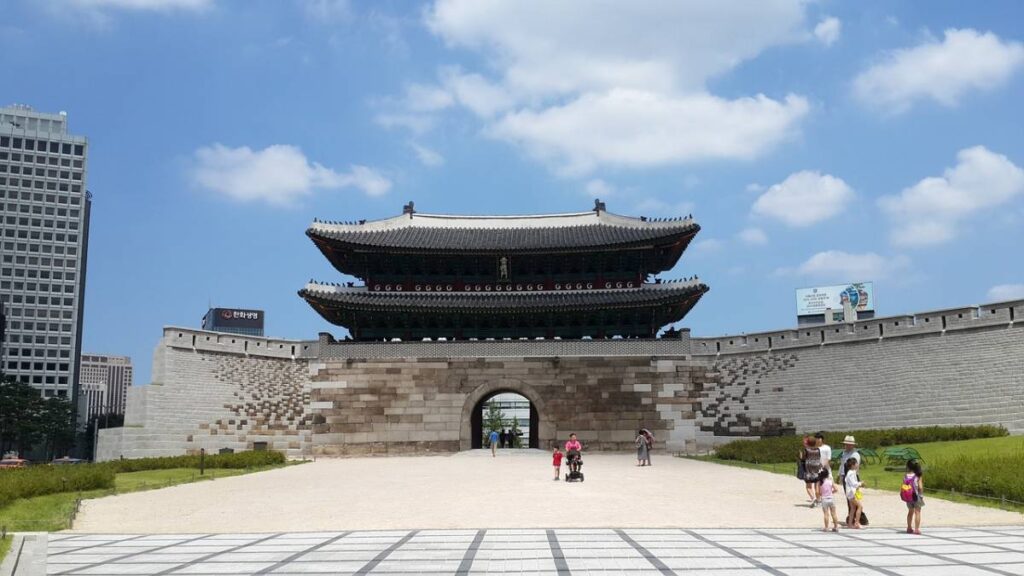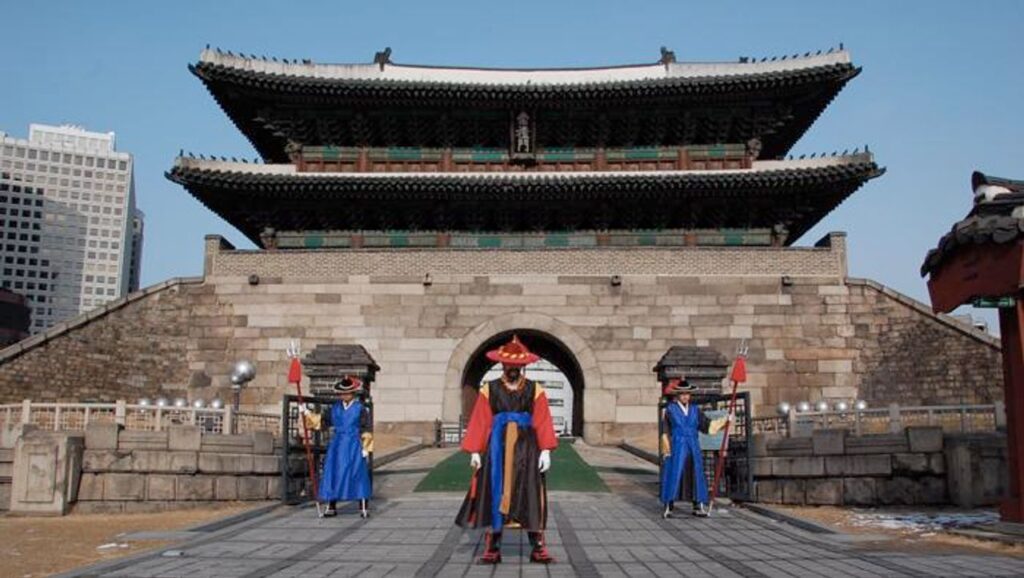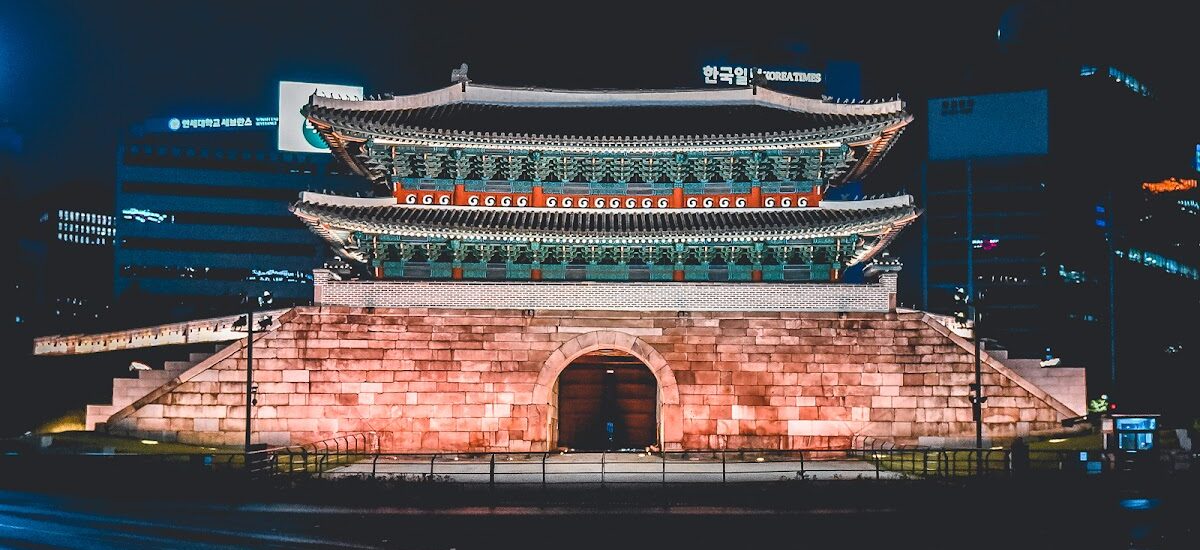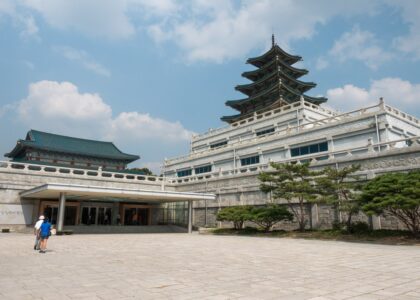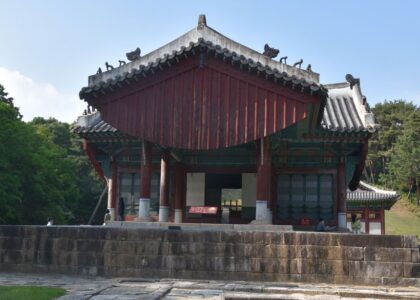Namdaemun Gate, officially named Sungnyemun (Gate of Exalted Propriety), is one of Seoul’s most iconic historical landmarks. Situated in Jung-gu, it served as the main southern gate of the original Seoul City Wall during the Joseon Dynasty. Construction began in 1396 and was completed in 1398, making it Seoul’s oldest surviving wooden structure at the time it was designated National Treasure No. 1 in 1962.
Architecturally, Namdaemun features a large, arched stone base topped by an ornate, two-story wooden pavilion, embodying traditional pagoda-style gateway design influenced by Neo-Confucian principles. It was historically a critical point for receiving foreign dignitaries.
The gate tragically suffered severe damage in a 2008 arson attack, which destroyed most of its wooden upper structure. A major, historically faithful restoration followed, and the gate was fully reopened to the public in 2013.
Today, Namdaemun Gate stands as a powerful symbol of resilience, contrasting sharply with the surrounding modern skyscrapers. It is a major attraction, often featuring traditional guard-changing ceremonies, and is located immediately adjacent to the massive, bustling Namdaemun Market—Korea’s largest traditional marketplace.
